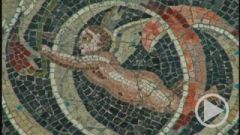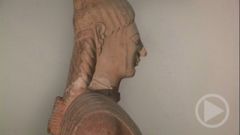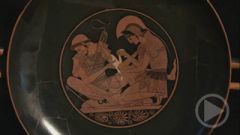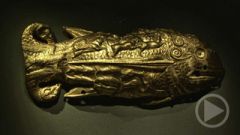- Home
- »
- Germany
- »
- Berlin
- »
- Museum Island
- »
- Pergamon Museum
- »
- The Collection of Classical Antiquities
- »
- The Pergamon Museum - Hildesheim Silver
Hildesheim Silver
Hildesheim Silver
In October of 1868, infantrymen in the northern German city of Hildesheim stumbled upon a fantastic find. As they were digging out a shooting range, they uncovered a pit. In it were three containers and in them were more than 70 valuable bowls, plates, cups, ladles, small tables and candleholders of pure silver, some of them opulently plated with gold.
The find became even more spectacular when it emerged that the pieces were almost 2,000 years old. The soldiers had found a resplendent Roman dinner service. Most of the silverware was made during the era of Emperor Augustus, about 20 B.C. Some of it is more recent.
But the piece de resistance, the Athena bowl, is 100 years older than that. In the relief in the centre of the bowl, the goddess sits gracefully upon a rock. Across from her is her sacred animal, the owl. Athena's robes, her helmet and the shield under her arm are vermeil. The decorative acanthus leaves around the edge of the bowl are also gilded. This gleaming fire-gilt contributes to making the bowl one of the most beautiful pieces of Roman silver anywhere. It was probably made in Alexandria, and like the rest of the dinner service, it was not intended to be used as a bowl. Its purpose was solely ornamental – as a precious showpiece on a noble table.
We don't know who buried the silver. It might have belonged to a Roman general. We do know that not all the pieces belong together. Some of it is missing and inscriptions name five different owners. So the set was not part of a single household. It might have belonged to a trader, or it might have been stolen goods. That would certainly explain the location where the Prussian soldiers found it – many days journey from the Roman Empire, in the middle of enemy territory.










